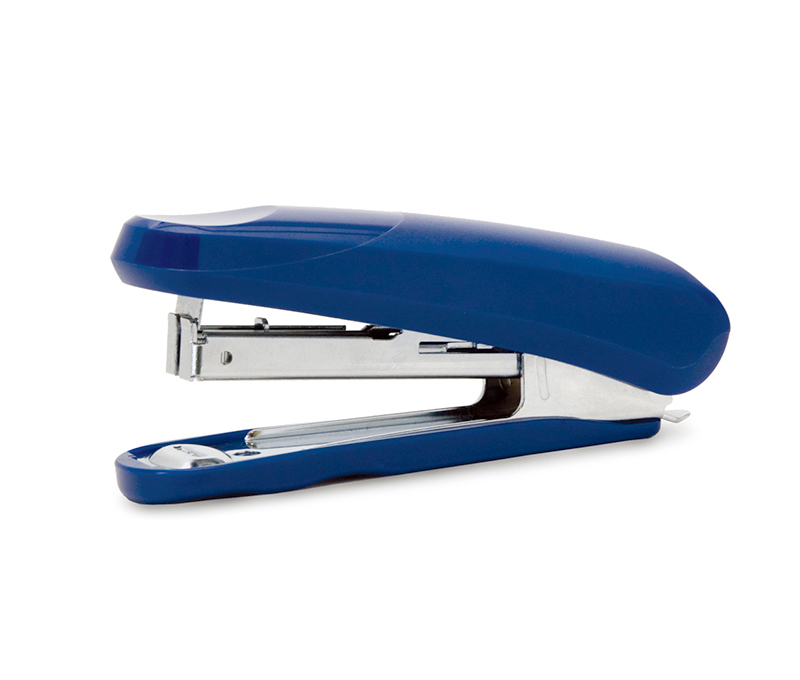Stapler
ステープラー
Stapler
CATEGORIES
A stapler, commonly called a “Hotchkiss” in Japan, binds together sheets of paper by punching a three-sided, rectangular-shaped staple into the stack.
Before the advent of the stapler, there were issues with binding together several sheets of paper. Glue took time to dry, was difficult to remove, and made hands messy. Paper clips, meanwhile, were not secure enough. When making booklets, it was burdensome to bind them with thread. The stapler is a convenient tool that simplifies these tasks. Staplers come in sizes like designated no. 1, no. 3, no. 10, and so forth. No. 3 and no. 10 are JIS standard sizes. The most common size today is the no. 10, which is popular in households, schools, offices, and many other settings due to its compact size and ease of use.
To use a compact stapler, hold it in your hand, keep the stack of paper you want to bind secure and steady, and then firmly press together the top and bottom of the stapler to punch a staple through the stack. Another way to operate the stapler is to open the handle portion to an angle of 180° (making it flat), align the area where the staples come out against a wall or board, and firmly press the head portion. This method is useful for attaching posters to a surface without using pins or thumbtacks. (If the wall or board is too hard, the staple will not be able to pierce the surface, which could damage the stapler.) The staples can jam in the stapler if the stapler is not pressed down firmly enough or if the item being bound is too hard. As most staples are made from zinc-plated mild steel, they tend to rust and may discolor documents over time. (There are also stainless steel staples that are resistant to rust and corrosion.) Be sure to use the correct staple size when reloading a stapler.
In Japan, many people think that American inventor Benjamin B. Hotchkiss (1825-1885), known for inventing the machine gun, also invented the stapler-but this is not true[tmk1]. The device was first imported to Japan in the middle of the Meiji era. Called Jido Kami Tsuduri-ki (an automatic paper binding tool) in its earliest incarnations, the stapler has undergone many changes, leading to the one we use today. Staplers are available for purchase at art supply stores and stationery stores.

